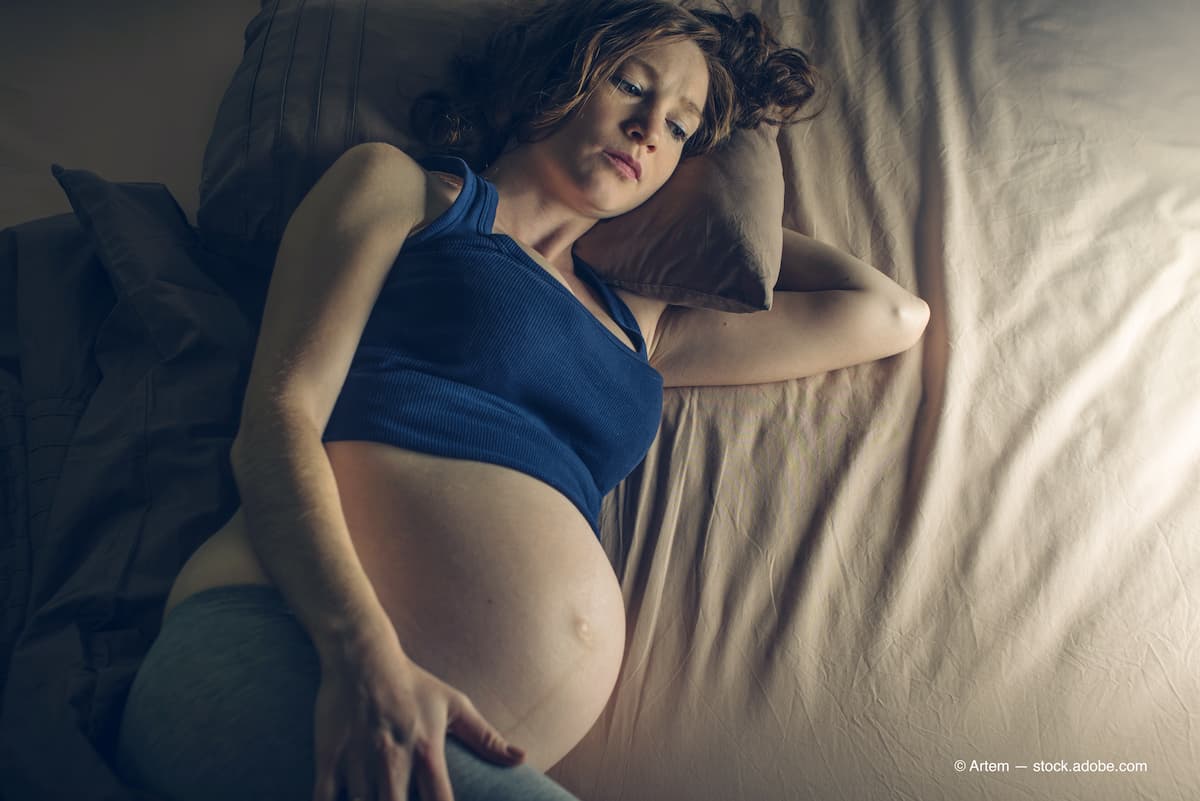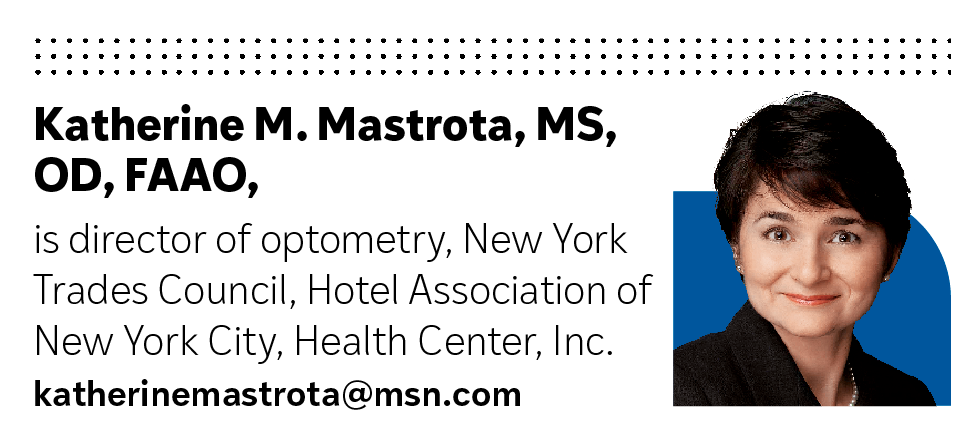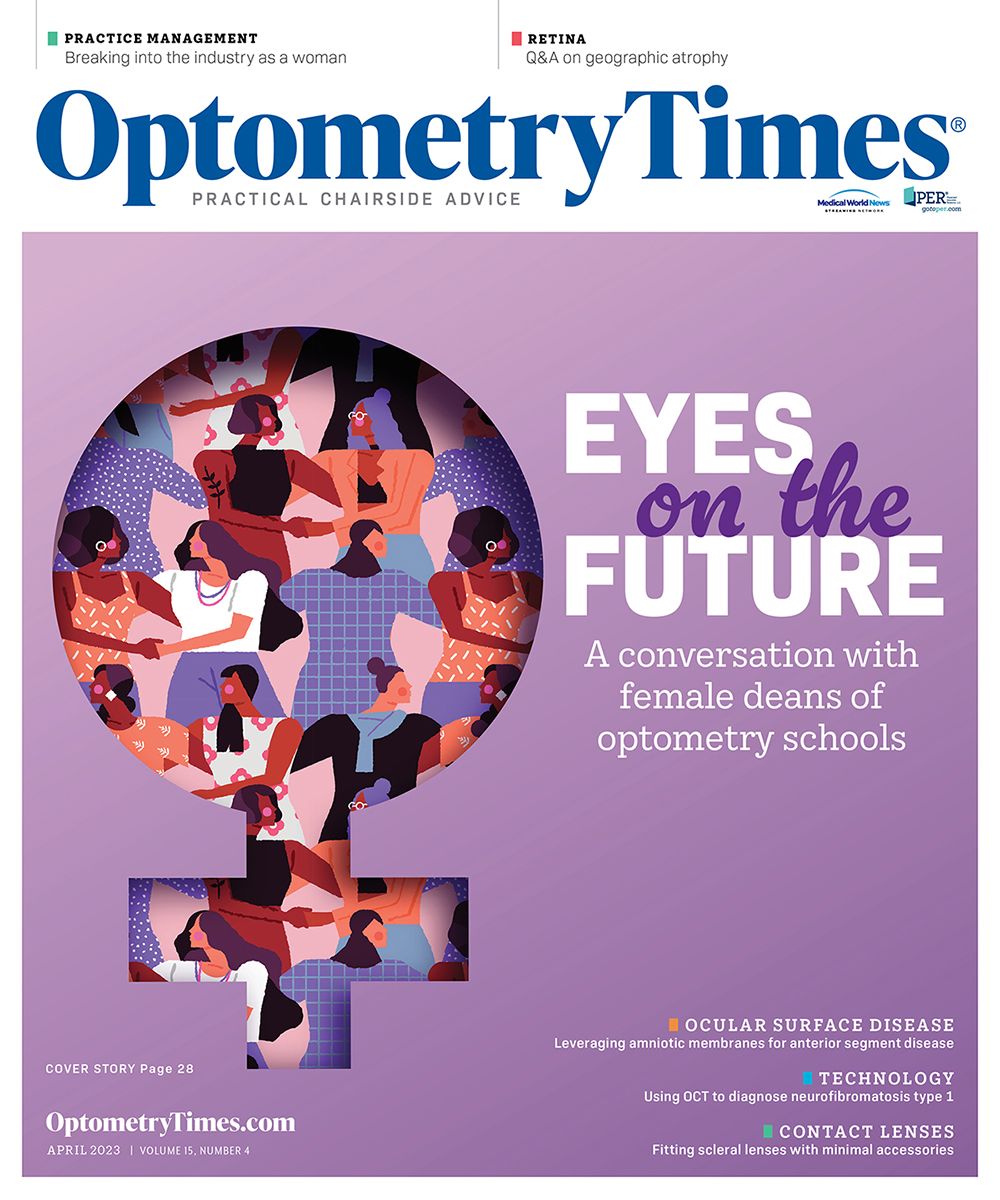A pregnancy sleep-OSA-dry eye triad
Recommending a nighttime eye mask and ear plugs may protect the ocular surface.
The prevalence of dry eye is reported to be high in pregnant women from the first to the third trimester and is associated with increasing gestational age. (Image credit: Adobe Stock/Artem)

Pregnancy involves anatomical, physiological, and biochemical changes in the body.1 During pregnancy, changes in hormones, metabolism, and hemodynamic, vascular, and immunological response can affect the eye, including the ocular surface tissues, which may be transient or permanent in some cases. The ocular effects of pregnancy may be physiological or pathological and can be associated with the development of new ocular pathology or may be modifications of preexisting conditions.
The most common physiological changes are alterations of corneal sensitivity and thickness, decreased tolerance to contact lenses, decreased intraocular pressure, hemeralopia (the inability to see clearly in bright light), and refractive errors.2 Keratoconus may progress during pregnancy and continue into the postpartum period.3
A recent study noted that Meibomian gland (MG) loss was higher in pregnant women than in the nonpregnant control group.4 Posterior segment changes can include worsening of diabetic retinopathy, central serous chorioretinopathy, increased risk of peripheral vitreochorioretinal dystrophies, and retinal detachment.2
Interestingly, the prevalence of dry eye is reported to be high in pregnant women from the first to the third trimester and is associated with increasing gestational age.5,6
Additionally, those who are pregnant experience significant sleep disturbance and higher rates of sleep disorder, especially in the third trimester.7,8 According to study data, 64% to 86% of women report problems with sleep quality during pregnancy.9 Insomnia and increased wakefulness after sleep onset can result from a large number of potential causes including gastroesophageal reflux, discomfort, frequent micturition, and dyspnea.10-12
Poor sleep quality and lowered sleep duration have been associated with a higher incidence of preterm birth,13 and glucose intolerance and gestational diabetes in pregnancy.14,15
Furthermore, findings from a number of studies have shown an increased frequency of snoring and sleep-disordered breathing as pregnancy progresses that may contribute to the increased incidence of glucose intolerance and pregnancy-induced hypertension.16
Another factor contributing to poor sleep during this period is obstructive sleep apnea (OSA), as pregnancy is a vulnerable period for the development or worsening of preexisting OSA in the pregnant patient.17 OSA in pregnancy is likely underdiagnosed due to a number of factors, including a lack of validated screening tools, insufficient provider awareness, and a need for greater understanding of the dynamic effects of pregnancy on OSA.18-20
In addition, OSA may be underappreciated in premenopausal women due to older age being a known risk factor for OSA, as well as differences in the clinical presentation of women with OSA versus men with OSA.21
As has been described, OSA—and sleep quality in general—may be an independent risk factor for ocular surface disease.22,23

It has been noted that noise and light, including that from the natural environment, are the 2 main causes of sleep disturbance, leading to sleep fragmentation and overall poor sleep quality.24 Sensory deprivation with an eye mask and earplugs has been demonstrated to increase sleep duration and improve sleep quality as well as sleep architecture (the pattern of normal sleep) among patients in intensive care units.25 Similarly, the use of eye masks and earplugs in the home bedroom environment by nulliparous women with short night sleep in their late pregnancy resulted in a significant prolongation of their night sleep duration.26
Considering these pregnancy-related effects, our suspicion for dry eye/ocular surface compromise should be piqued as we examine our gravid patients. Select clinical interview questions will build our dry eye risk profile for pregnant patients and guide our thoughtful therapeutic recommendations for this specific subset of individuals. The simple recommendation of nighttime eye mask and earplug use may not only reduce pregnancy-precipitated sleep disturbance, but also protect the ocular surface.27
References
1. Morin M, Vayssiere C, Claris O, et al. Evaluation of the quality of life of pregnant women from 2005 to 2015. Eur J Obstet Gynecol Reprod Biol. 2017;214:115-130. doi:10.1016/j.ejogrb.2017.04.045
2. Gotovac M, Kaštelan S, Lukenda A. Eye and pregnancy. Coll Antropol. 2013;37(suppl 1):189-193.
3. Naderan M, Jahanrad A. Topographic, tomographic and biomechanical corneal changes during pregnancy in patients with keratoconus: a cohort study. Acta Ophthalmol. 2017;95(4):e291-e296. doi:10.1111/aos.13296
4. Sarikaya S, Acet Y. The effect of pregnancy on meibomian gland, tear film, cornea and anterior segment parameters. Photodiagnosis Photodyn Ther. 2022;40:103070. doi:10.1016/j.pdpdt.2022.103070
5. Nwachukwu NZ, Onwubiko S, Nnemma U, Agu PU, Nwachukwu DC, Eegwui IR. Dry eye disease: a longitudinal study among pregnant women in Enugu, south east, Nigeria. Ocul Surf. 2019;17(3):458-463. doi:10.1016/j.jtos.2019.05.001
6. Asiedu K, Kyei S, Adanusa M, et al. Dry eye, its clinical subtypes and associated factors in healthy pregnancy: a cross-sectional study. PLoS One. 2021;16(10):e0258233. doi:10.1371/journal.pone.0258233
7. Mindell JA, Cook RA, Nikolovski J. Sleep patterns and sleep disturbances across pregnancy. Sleep Med. 2015;16(4):483-488. doi:10.1016/j.sleep.2014.12.006
8. Hutchison BL, Stone PR, McCowan LME, Stewart AW, Thompson JMD, Mitchell EA. A postal survey of maternal sleep in late pregnancy. BMC Pregnancy Childbirth. 2012;12:144. doi:10.1186/1471-2393-12-144
9. Pien GW, Fife D, Pack AI, Nkwuo JE, Schwab RJ. Changes in symptoms of sleep-disordered breathing during pregnancy. Sleep. 2005;28(10):1299-1305. doi:10.1093/sleep/28.10.1299
10. Facco FL, Kramer J, Ho KH, Zee PC, Grobman WA. Sleep disturbances in pregnancy. Obstet Gynecol. 2010;115(1):77-83. doi:10.1097/AOG.0b013e3181c4f8ec
11. Mindell JA, Jacobson BJ. Sleep disturbances during pregnancy. J Obstet Gynecol Neonatal Nurs. 2000;29(6):590-597. doi:10.1111/j.1552-6909.2000.tb02072.x
12. Pien GW, Schwab RJ. Sleep disorders during pregnancy. Sleep. 2004;27(7):1405-1417. doi:10.1093/sleep/27.7.1405
13. Chang JJ, Pien GW, Duntley SP, Macones GA. Sleep deprivation during pregnancy and maternal and fetal outcomes: is there a relationship? Sleep Med Rev. 2010;14(2):107-114. doi:10.1016/j.smrv.2009.05.001
14. Bourjeily G, Raker CA, Chalhoub M, Miller MA. Pregnancy and fetal outcomes of symptoms of sleep-disordered breathing. Eur Respir J. 2010;36(4):849-855. doi:10.1183/09031936.00021810
15. Facco FL, Grobman WA, Kramer J, Ho KH, Zee PC. Self-reported short sleep duration and frequent snoring in pregnancy: impact on glucose metabolism. Am J Obstet Gynecol. 2010;203(2):142.e1-142.e1425. doi:10.1016/j.ajog.2010.03.041
16. Pérez-Chada D, Videla AJ, O’Flaherty ME, et al. Snoring, witnessed sleep apnoeas and pregnancy-induced hypertension. Acta Obstet Gynecol Scand. 2007;86(7):788-792. doi:10.1080/00016340701281919
17. Dominguez JE, Krystal AD, Habib AS. Obstructive sleep apnea in pregnant women: a review of pregnancy outcomes and an approach to management. Anesth Analg. 2018;127(5):1167-1177. doi:10.1213/ANE.0000000000003335
18. Abdullah HR, Nagappa M, Siddiqui N, Chung F. Diagnosis and treatment of obstructive sleep apnea during pregnancy. Curr Opin Anaesthesiol. 2016;29(3):317-324. doi:10.1097/ACO.0000000000000317
19. Karan S, Ginosar Y. Gestational sleep apnea: have we been caught napping? Int J Obstet Anesth. 2016;26:1-3. doi:10.1016/j.ijoa.2016.03.001
20. Dominguez JE, Lockhart EM, Miskovic A, Bullough AS. Recognition of obstructive sleep apnea in pregnancy survey. Int J Obstet Anesth. 2016;26:85-87. doi:10.1016/j.ijoa.2016.01.003
21. Kapsimalis F, Kryger MH. Gender and obstructive sleep apnea syndrome, part 1: clinical features. Sleep. 2002;25(4):412-419.
22. Mavigok E, Ozcan AA, Ulas B. Obsructive sleep apnea syndrome: is it a risk factor for ocular surface disease and ocular comorbidities? Int Ophthalmol. Published online December 29, 2022. doi:10.1007/s10792-022-02629-3
23. Li A, Zhang X, Guo Y, et al. The association between dry eye and sleep disorders: the evidence and possible mechanisms. Nat Sci Sleep. 2022;14:2203-2212. doi:10.2147/NSS.S378751
24. Kamdar BB, Needham DM, Collop NA. Sleep deprivation in critical illness: its role in physical and psychological recovery. J Intensive Care Med. 2012;27(2):97-111. doi:10.1177/0885066610394322
25. Locihová H, Axmann K, Padyšáková H, Fejfar J. Effect of the use of earplugs and eye mask on the quality of sleep in intensive care patients: a systematic review. J Sleep Res. 2018;27(3):e12607. doi:10.1111/jsr.12607
26. Teo IH, Hong J, Tan PC, Lim BK. Eye masks and earplugs to improve night sleep duration in nulliparas: a randomized trial. Cureus. 2022;14(12):e32226. doi:10.7759/cureus.32226
27. Kim M, Lee Y, Mehra D, Sabater AL, Galor A. Dry eye: why artificial tears are not always the answer. BMJ Open Ophthalmol. 2021;6(1):e000697. doi:10.1136/bmjophth-2020-000

Newsletter
Want more insights like this? Subscribe to Optometry Times and get clinical pearls and practice tips delivered straight to your inbox.